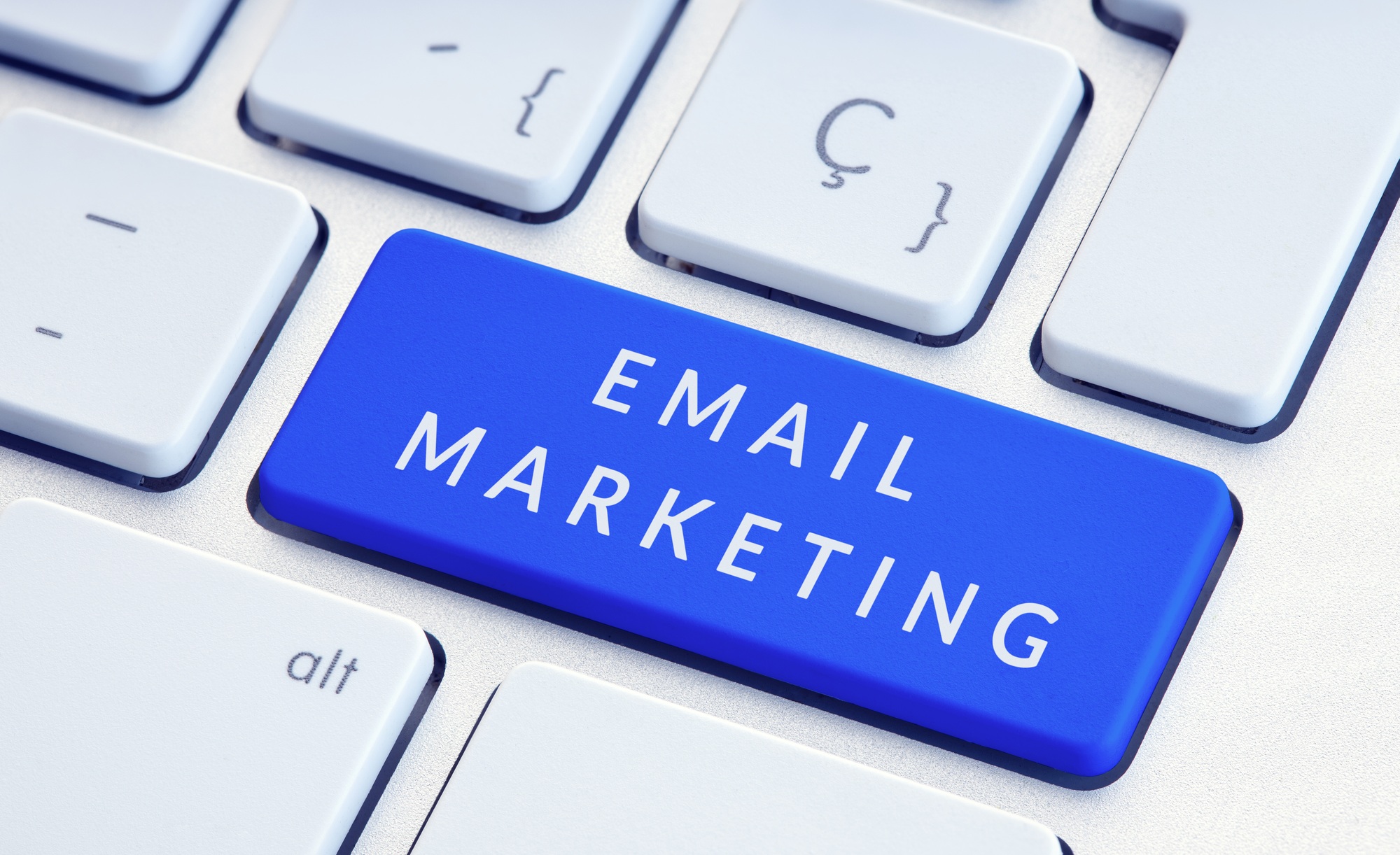Key Takeaways

- Email Marketing Definition: Email marketing involves sending targeted messages to potential and existing customers to promote products, services, and brand awareness effectively.
- Benefits for Small Businesses: It enhances direct communication, boosts customer engagement, and is a cost-effective strategy, yielding an average return of $42 for every dollar spent.
- Building an Email List: Focus on growing a consent-based email list through double opt-in methods and segmentation to tailor messages to the audience’s preferences.
- Compelling Content Creation: Personalize emails and create engaging subject lines along with clear calls to action (CTAs) to increase open and click-through rates.
- Performance Analysis: Regularly monitor key metrics such as open and click-through rates, and utilize A/B testing to continuously improve email campaign effectiveness.
- Avoid Common Pitfalls: Ensure mobile optimization and personalization in your campaigns to enhance user experience and prevent losing engagement opportunities.
In today’s digital landscape, email marketing stands out as one of the most powerful tools for businesses looking to connect with their audience. With billions of emails sent daily, it’s no surprise that this channel can drive significant engagement and conversions. If you’re not harnessing its potential, you might be missing out on a goldmine of opportunities.
Crafting effective email campaigns is more than just hitting “send.” It involves understanding your audience, creating compelling content, and analyzing results to refine your strategy. Whether you’re a small business owner or a marketing professional, mastering email marketing can elevate your brand and foster lasting customer relationships. Let’s dive into the essentials of email marketing and explore how you can make it work for you.
What Is Email Marketing?
Email marketing involves sending targeted emails to a group of recipients. This marketing strategy aims to promote products, services, and brand awareness by engaging potential and existing customers directly.
Email marketing can benefit small businesses significantly. It allows you to reach your audience effectively and personalize communication. By segmenting your email list, you can tailor messages to specific customer needs or interests.
Effective email marketing campaigns typically consist of promotional messages, newsletters, and customer follow-ups. Promotional messages highlight special offers or new products. Newsletters provide valuable content and updates, helping to establish trust and encourage customers to remain engaged. Customer follow-ups, when done after purchases, enhance customer satisfaction and encourage repeat business.
Analyzing the performance of your email campaigns is crucial for ongoing improvement. You can track open rates, click-through rates, and conversions to assess effectiveness. Small adjustments based on this data can lead to significant improvements in engagement and sales.
Benefits Of Email Marketing

Email marketing provides numerous advantages for your small business, enhancing direct communication and engagement with your audience. This channel enables you to control messaging while delivering relevant content to subscribers.
Increased Customer Engagement
Email marketing significantly boosts customer engagement. It fosters one-on-one interaction, allowing you to convey personalized messages directly to your audience. Engaged customers, who receive targeted emails based on their preferences, report higher satisfaction levels, which contributes to increased loyalty. According to studies, segmented email campaigns can lead to revenue increases of up to 760%. Tailoring your content to meet customer interests not only encourages participation but also drives repeat business.
Cost-Effectiveness
Email marketing stands out for its cost-effectiveness, especially for small businesses. It offers an affordable option for reaching a wide audience without the costs associated with many traditional marketing methods. With high ROI potential, email marketing can yield an average return of $42 for every dollar spent, making it a valuable tool for budget-conscious businesses. This efficient use of resources strengthens your marketing endeavors and allows for greater investment in other growth areas.
Key Strategies For Successful Email Marketing

Successful email marketing combines strategic approaches to maximize engagement and drive conversions. Focus on these key strategies to enhance your email campaigns.
Building An Email List
Building a strong email list involves specific steps. Use a consent-based list by implementing double opt-in signup methods. This approach strengthens your sender reputation and adheres to regulations like GDPR and the CAN-SPAM Act. Target a relevant and engaged audience by only adding contacts who are likely to appreciate your content. Avoid purchasing email lists, as these contacts often lead to spam reports and unsubscribes. Segmentation plays a vital role, so gather data on preferences and demographics to categorize your audience and tailor your messages. Lastly, create easily accessible email signup forms and offer incentives such as discounts or exclusive content to boost your subscriber count. Automated welcome emails can foster initial engagement with new subscribers.
Crafting Compelling Content
Crafting compelling content is essential for capturing attention in crowded inboxes. Personalize your emails to resonate with your audience, using their names and other relevant data. Create engaging subject lines that invite opens, ensuring they reflect the content inside. Incorporate clear calls to action (CTAs) that guide your audience towards your goals, such as making a purchase or signing up for a webinar. Visual elements, like images or infographics, enhance engagement and present information more effectively. Prioritize mobile optimization, as a significant portion of subscribers accesses email on mobile devices.
Analyzing Performance Metrics
Analyzing performance metrics provides insights into your email marketing effectiveness. Monitor key metrics such as open rates, click-through rates, and conversion rates. Open rates reveal how compelling your subject lines are, while click-through rates indicate content engagement. Segment your audience further based on these metrics to refine future campaigns and maximize effectiveness. Use A/B testing to evaluate different content variations and optimize messages based on performance. Regular analysis enables continuous improvement, ensuring your email marketing strategies align with your business goals and audience preferences.
Common Mistakes To Avoid

Email marketing has immense potential, yet common mistakes can hinder its effectiveness. Recognizing and addressing these issues enhances your campaigns’ impact.
Ignoring Mobile Optimization
Ignoring mobile optimization significantly affects your email engagement. Litmus reports that 55% of emails open on mobile devices, indicating the necessity for mobile-friendly designs. Emails that aren’t optimized for mobile often present readability and navigation challenges. Distorted layouts frustrate recipients, leading to decreased engagement and lower click-through rates. Non-optimized emails face deliverability issues too; some email clients, like Gmail, may classify them as spam. Ensuring your emails are visually appealing and functional on mobile screens boosts user experience and increases response rates.
Lack Of Personalization
Lack of personalization can diminish the relevance of your messages. Generic emails fail to engage, while tailored content speaks directly to your audience’s interests. Personalized campaigns can enhance connection and engagement, especially for small businesses. Implementing segmentation strategies allows you to customize messages based on user behavior and preferences. Increased personalization is shown to boost open and click-through rates significantly, leading to higher conversion rates. Adapting your approach to include targeted messaging that resonates with specific audience segments amplifies marketing effectiveness.
Conclusion

Email marketing is more than just a tool; it’s a vital strategy for connecting with your audience and driving growth. By focusing on personalized content and understanding your audience’s needs you can significantly enhance engagement and build lasting relationships.
Remember to analyze your campaign performance regularly to refine your approach and maximize your return on investment. Embrace the power of segmentation and mobile optimization to ensure your messages resonate with recipients.
With the right strategies in place your email marketing efforts can lead to impressive results and a stronger brand presence. Start implementing these insights today and watch your business thrive.
Frequently Asked Questions

What is email marketing?
Email marketing is the practice of sending targeted emails to promote products, services, and brand awareness, allowing businesses to engage with both potential and existing customers directly. It involves crafting tailored messages to encourage user action.
Why is email marketing important for businesses?
Email marketing is crucial because it enhances direct communication with audiences, increases customer engagement, and builds trust. Effective campaigns can lead to higher conversions, making it an essential tool for driving sales and fostering lasting customer relationships.
How can I improve my email marketing campaigns?
To improve email marketing campaigns, focus on understanding your audience, crafting compelling content, and analyzing performance metrics. Utilize list segmentation for personalized messaging and ensure your emails are mobile-friendly to boost engagement and conversions.
What are the benefits of segmented email campaigns?
Segmented email campaigns allow for targeted messaging based on user behavior and preferences. This approach can lead to higher engagement rates, increased customer satisfaction, and significantly boost revenue, sometimes by up to 760%.
How can small businesses leverage email marketing?
Small businesses can leverage email marketing by building a strong email list, crafting personalized content, and utilizing cost-effective strategies. With an average ROI of $42 for every dollar spent, it offers a budget-friendly way to reach and engage customers.
What mistakes should I avoid in email marketing?
Avoid common mistakes like neglecting mobile optimization, sending generic messages, and failing to personalize content. Ignoring these aspects can lead to low engagement rates and even cause your emails to be marked as spam.
How often should I send marketing emails?
The frequency of sending marketing emails varies, but aim for consistency without overwhelming your audience. A well-planned schedule, such as bi-weekly or monthly, allows for engagement while respecting your subscribers’ inboxes.
What metrics should I track in my email campaigns?
Key metrics to track include open rates, click-through rates, conversion rates, and unsubscribe rates. Monitoring these metrics helps assess the effectiveness of your campaigns and identify areas for improvement.
Image Via Envato: innu_asha84, kenishirotie, GaudiLab, Visual__Production, prathanchorruangsak, iLixe48, fotodestock



